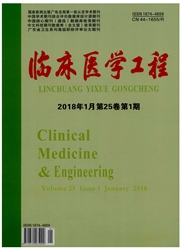

 中文摘要:
中文摘要:
目的 研究进行造血干细胞移植术后的患者的生活质量与护理干预的关系.方法 选取我院2012年1月至2013年6月收治的50例进行造血干细胞移植术且存活一年以上的患者,以数字法随机分成观察组(25例)和对照组(25例).对照组在手术后进行常规护理,观察组在常规护理基础上进行护理干预,比较两组患者的生存质量等.结果 护理后,观察组生活质量观察评分和症状自评量表评分均明显高于对照组,差异均有统计学意义(均P <0.05);观察组总满意为100.00% (25/25),高于对照组72.00% (18/25),差异有统计学意义(P<0.05).结论 采用护理干预的方法能有效提高进行造血干细胞移植术的患者的生活质量,患者及其家属对于护理结果及后续护理工作表示满意,值得在临床上广泛推广.
 英文摘要:
英文摘要:
Objective To study the relationship between quality of life and nursing intervention for patients after hematopoietic stem cell transplantation. Methods 50 patients who survived for more than one year after performed hematopoietic stem cell transplantation in our hospital from January 2012 to June 2013 were randomly divided into observation group (25 cases) and control group (25 cases) by digital method. After operation, the control group were given routine nursing, while the observation group were given nursing intervention in addition to the conventional care. Their quality of life were compared. Results After nursing, the score of quality of life and the score of symptom checklist in the observation group were significantly higher than those in the control group, with statistical significance (P 〈0.05). The satisfaction rate of the observation group was 100.00% (25/25) of observation group, higher than 72.00% (18/25) of the control group (18/25), with statistical significance (P 〈0.05). Conclusion Nursing intervention can obviously improve the quality of life of patients with hematopoietic stem cell transplantation; besiedes, the patients and their families are satisfied with the nursing result and the follow-up nursing service. It is worthy to popularize in the clinic.
 同期刊论文项目
同期刊论文项目
 同项目期刊论文
同项目期刊论文
 期刊信息
期刊信息
